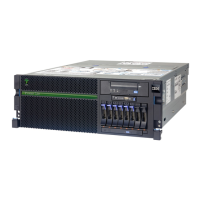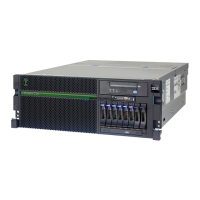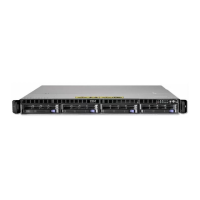Chapter 3. Virtualization 127
Table 3-2 lists the differences between these modes.
Table 3-2 Differences between POWER6 and POWER7 compatibility mode
3.3 Active Memory Expansion
Active Memory Expansion enablement is an optional feature of POWER7+ processor-based
servers that must be specified when creating the configuration in the e-Config tool, as follows:
IBM Power 770 (FC 4791)
IBM Power 780 (FC 4791)
This feature enables memory expansion on the system. Using compression/decompression
of memory content can effectively expand the maximum memory capacity, providing
additional server workload capacity and performance.
Active Memory Expansion is a POWER technology that allows the effective maximum
memory capacity to be much larger than the true physical memory maximum.
Compression/decompression of memory content can allow memory expansion up to 100%,
which in turn enables a partition to perform significantly more work or support more users
with the same physical amount of memory. Similarly, it can allow a server to run more
partitions and do more work for the same physical amount of memory.
Active Memory Expansion is available for partitions running AIX 6.1, Technology Level 4 with
SP2, or later. Linux will support Active Memory Expansion on the next major versions.
Active Memory Expansion uses CPU resource of a partition to compress/decompress the
memory contents of this same partition.The trade-off of memory capacity for processor cycles
can be an excellent choice, but the degree of expansion varies based on how compressible
POWER6 and POWER6+
mode
POWER7
mode
Customer
value
2-thread SMT 4-thread SMT Throughput performance,
processor core utilization
Vector Multimedia Extension/
AltiVec (VMX)
Vector scalar extension (VSX) High-performance computing
Affinity OFF by default 3-tier memory, Micropartition
Affinity, Dynamic Platform
Optimizer
Improved system performance
for system images spanning
sockets and nodes
Barrier Synchronization
Fixed 128-byte array,
Kernel Extension Access
Enhanced Barrier
Synchronization
Variable Sized Array, User
Shared Memory Access
High-performance computing
parallel programming
synchronization facility
64-core and 128-thread scaling 32-core and 128-thread
scaling
64-core and 256-thread
scaling
128-core and 512-thread
scaling
256-core and 1024-thread
scaling
Performance and scalability for
large scale-up single system
image workloads (such as
OLTP, ERP scale-up, and
WPAR consolidation)
EnergyScale CPU Idle EnergyScale CPU Idle and
Folding with NAP and SLEEP
Improved energy efficiency

